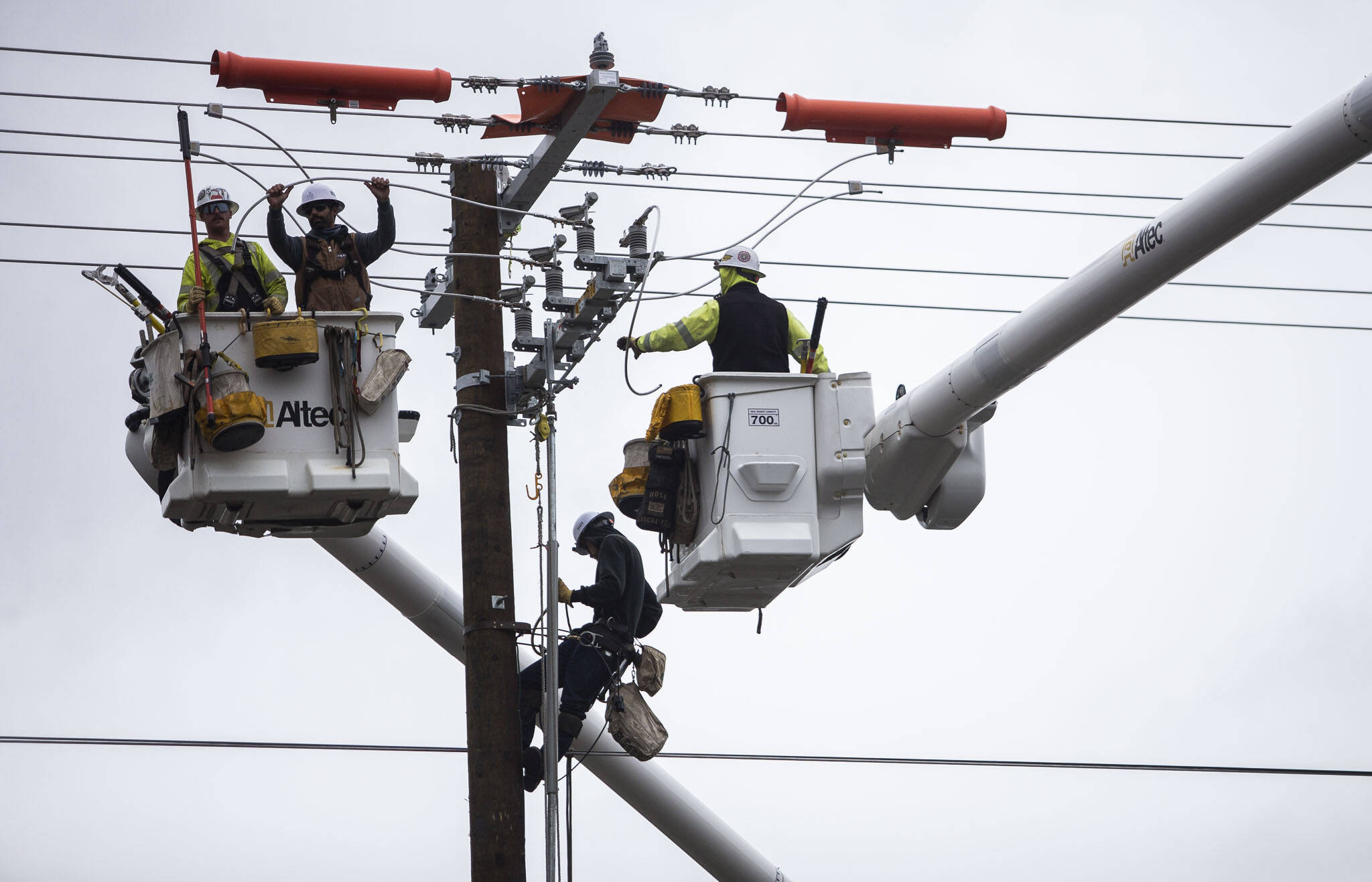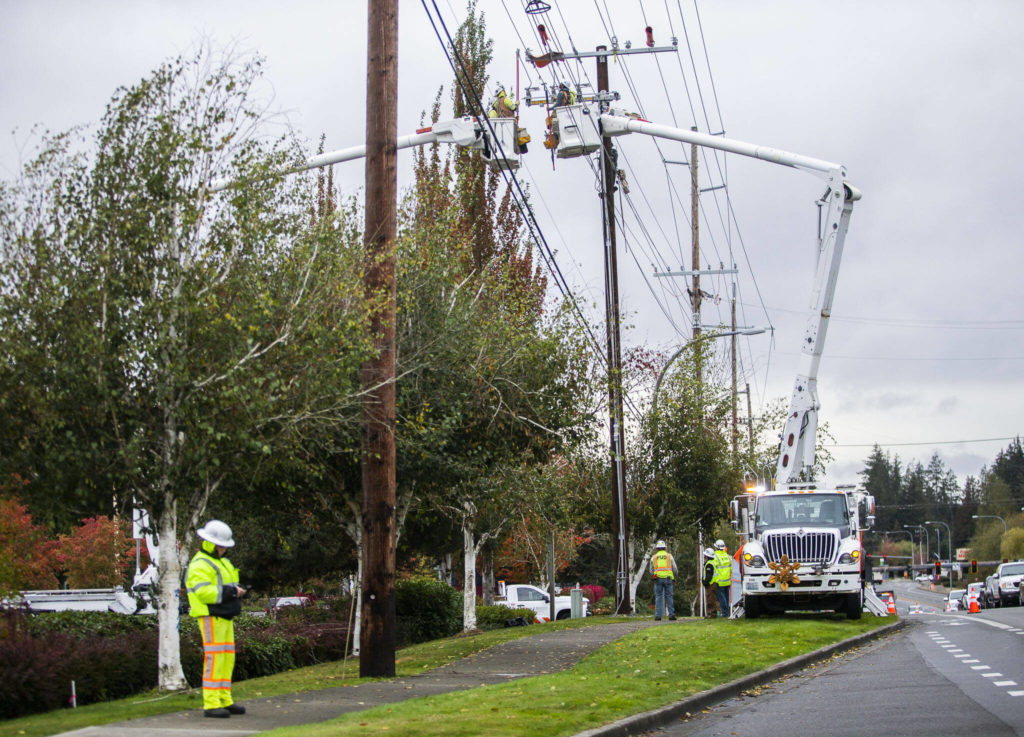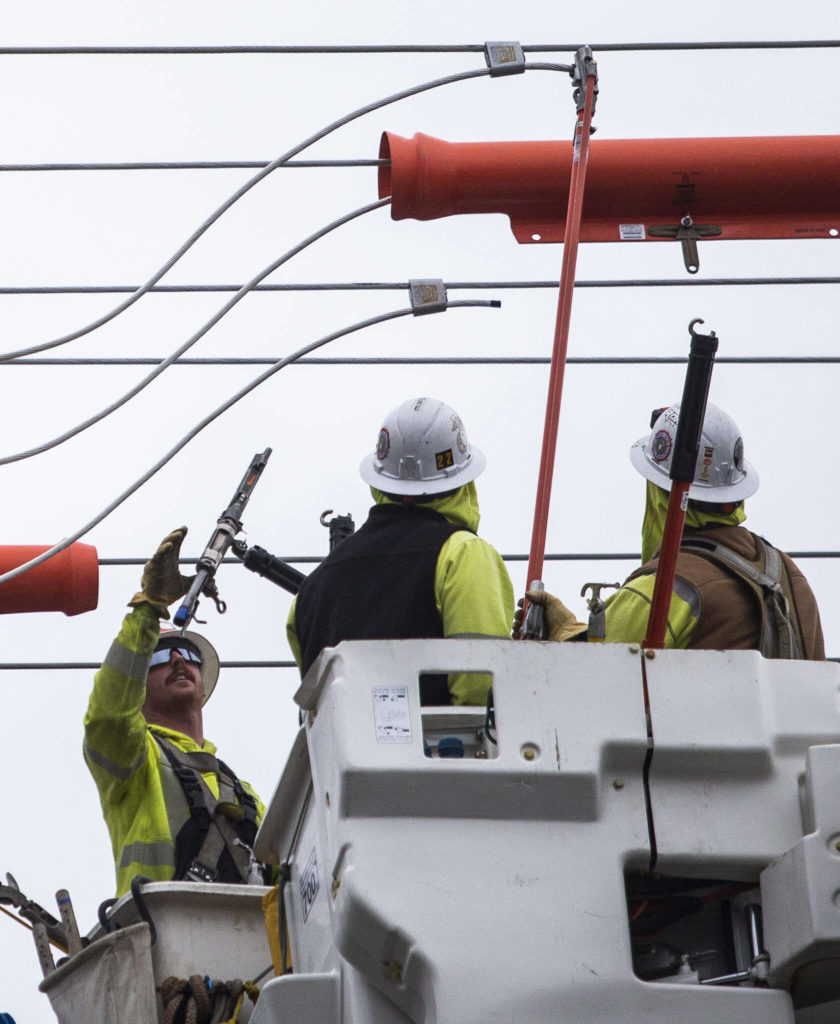EVERETT — The first two public fast electric vehicle charging stations in downtown Everett went online this summer.
Likely dozens more are needed, and soon, along with other investments and upgrades to the electrical grid.
Climate change, consumer trends, population growth as well as state and federal bills are pushing the Snohomish County Public Utility District’s energy demand forecasts into soaring heights.
The PUD, which provides power for over 367,000 customers, is planning for an increasingly electric future. That includes vehicles that refuel from plug-ins instead of gas pumps, heat generated without natural gas, and more air conditioning units to mitigate 100-degree days.
Another 260,000 people are projected to live in the county within 20 years. Even if just a third of them become PUD customers, that alone presents a big jump in energy demand.
Electric vehicles are the driving factor.
A little over 12,000 electric vehicles are registered in Snohomish County as of early December, according to state data.
Until recently, the district was looking at a high projection of 50,000 electric vehicles in the county by 2040.
A confluence of sudden legislative and market shifts have bumped the high-end forecast to 660,000 in that same span, PUD senior manager of rates, economics and energy risk management Brian Booth said.
“We’ve got some work to do and we probably need to get started sooner than later,” Booth said.
Puget Sound Energy, a private energy company that provides power to over 1 million customers and natural gas to 900,000 customers, is projecting similar demand growth, largely driven by electric vehicles.
Energy demand growth was relatively flat over the past 15 years, Booth said.
The next 15 years could be a dramatic swing.
Car companies producing more electric vehicles coupled with federal bills such as the Bipartisan Infrastructure Law and the Inflation Reduction Act could spur sharp growth in the number of people looking to juice their cars at home, shopping and working.
The Inflation Reduction Act includes a slew of incentives for people to electrify their homes and transportation, as reported by Julie Titone in The Daily Herald. There’s money for heat pump installation, energy efficient electric appliances, home battery and solar installation, and electric vehicles.
The state has a goal to end sales of new gas-powered vehicles by 2035, as well.
All of those things could mean more demand on the PUD’s existing infrastructure.
The ability for agencies across the state to meet the potential demand with upgrades to its electrical infrastructure is a lingering question, as recently reported by Crosscut’s John Stang.
At the same time electric vehicles become more prevalent on the roads, more homes could rely on PUD power.
There’s already been a shift through the pandemic with people working from home and generally being home more often. The PUD saw a 2% to 3% increase in residential power consumption, which hasn’t declined even as more employers recalled workers to the office.
The PUD estimates 30% of gas-powered homes will switch to electric within 40 years, if not earlier, because of the Inflation Reduction Act’s incentives.
Air conditioning unit sales, which also includes central air and heat pumps, grew in recent Census data, Booth said. Just a couple of decades ago about 6% of homes reported having some kind of air conditioning. That jumped to 50% recently, Booth said.
“It was just too darn hot to be inside your house when it was 110 outside,” he said.
Now the PUD is estimating that number to reach 85% by 2040.
To prepare for all of energy demand that could create, the PUD will look at building more substations, installing bigger and more wires, replacing old transformers with larger ones and implementing energy efficiency programs.
It’s too early to know what it could cost, Booth said. But some of those expenses could be averted through customer behavior changes, he said.
“That could be worth a whole lot of saved equipment and money for us,” he said. “Money we save is money that the ratepayers save.”
Time-of-day rates could encourage people to charge an electric car overnight when power is cheaper.
The PUD has been studying energy use from home charging stations that signed up for its pilot program. One campaign that asked customers to use less energy during peak times saw a 33% reduction, Booth said.
“If all this magically appeared today, we would have a problem,” Booth told The Daily Herald. “We’ve got 20 years to build up to serve all that.”
Ben Watanabe: bwatanabe@heraldnet.com; 425-339-3037; Twitter @benwatanabe.
This story has been modified to correct the forecasted number of electric vehicles by 2040 and the percentage of homes that have air conditioning in Snohomish County.
Talk to us
> Give us your news tips.
> Send us a letter to the editor.
> More Herald contact information.




























